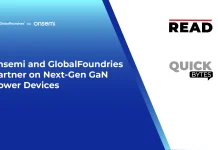Professionals in the plumbing and infrastructure maintenance areas now inspect and identify pipeline problems in a completely different way thanks to modern technologies. The pipe inspection camera is one example of this cutting-edge technology. These tiny cameras, which are used to visually inspect conduits and pipes, can provide information about the condition of hidden conduits and pipes in plumbing systems, as well as any possible issues or obstructions they may contain. By 2030, it is anticipated that the pipe inspection camera market will be valued at USD 480.09 million globally. Let’s see how they have developed into an essential resource for experts operating in many industries.
What is a Pipe Inspection Camera?
A specialized tool called a pipe inspection camera is used to visually examine the interior of sewer, drain, and pipe systems. It usually consists of a tiny camera that is attached to the end of a flexible cable so that it may be adjusted to fit through different-sized and shaped pipes. The camera’s LED lights illuminate dark spots, giving it a good picture of the pipe’s state.
Because they allow for real-time visual examinations of plumbing systems, these plumbing cameras are vital tools for professionals in the field, including environmental engineers, plumbers, and sewage inspectors. Without the need for intrusive excavation, experts can use a drain camera to find problems like corrosion, blockages, clogs, and cracks, saving time and money.
How Does a Pipe Inspection Camera Work?
A pipe inspection camera operates by utilizing a small, high-definition camera mounted on the end of a flexible cable. This camera is inserted into the pipe through an access point, such as a cleanout or vent stack. As the camera is pushed through the pipe, it captures real-time video footage of the interior, which is transmitted to a monitor for immediate viewing.
Sewage cameras are equipped with bright LED lights that illuminate the pipe’s interior, allowing technicians to see clearly even in dark or confined spaces. This illumination is crucial for identifying issues such as blockages, cracks, corrosion, and other structural problems within the pipe. The flexibility of the cable enables the camera to navigate bends and turns in the piping system, providing a comprehensive view of the entire length of the pipe.
Additionally, many modern inspection cameras come with recording capabilities, allowing technicians to document their findings for further analysis or reporting. This technology significantly reduces the need for invasive digging, saving time and costs associated with traditional inspection methods.
Growing Popularity of Pipe Inspection Cameras
The use of inspection cameras is on the rise, driven by advancements in technology and an increasing focus on proactive infrastructure management by both businesses and government entities. These cameras are becoming essential tools for maintaining and monitoring critical infrastructure systems.
Noosa Council’s Advanced Pipe Inspection
For example, Noosa Council’s Asset Management team has utilized advanced remote-controlled CCTV robotic cameras to thoroughly inspect the city’s stormwater pipes. This technology allows them to effectively identify blockages, cracks, and other issues, demonstrating the capabilities and benefits of modern pipe inspection techniques.
What are the Key Advantages of Using a Pipe Inspection Camera?
Improved Inspection Efficiency and Precision
Inspection cameras provide a clear view of the interior of pipelines, eliminating the need for manual inspection and guesswork. This visual approach significantly enhances the accuracy and efficiency of inspections, enabling professionals to make informed decisions based on concrete evidence.
Financial Advantages
By facilitating early detection of potential issues, inspection cameras help prevent costly repairs and reduce downtime. This proactive approach allows organizations to address problems before they escalate, leading to substantial cost savings. Quick issue identification not only saves time but also lowers expenses associated with emergency repairs and operational disruptions.
Support from Government Investments
Government funding for infrastructure projects, especially in wastewater management, highlights the importance of inspection cameras. For instance, the Australian government invested $2 billion in 2020 to improve wastewater infrastructure. Such significant investments emphasize the role of pipe inspection technology in ensuring effective monitoring and management of infrastructure assets.
Technological Progress
The evolution of camera technology has greatly enhanced the functionality of pipe inspection systems. Features such as high-definition imaging, advanced lighting, and wireless connectivity have improved the quality of inspections. The introduction of systems like CUES’ Flexitrax, which offers modular and customizable inspection solutions, exemplifies the advancements in this field.
Compliance and Safety Enhancements
Pipe inspection cameras are crucial for meeting safety regulations and standards in various industries, including construction and municipal maintenance. These cameras enable thorough inspections, accurate documentation, and effective identification of potential safety hazards, thereby ensuring compliance with legal requirements and improving overall safety measures.
Increased Emphasis on Infrastructure Maintenance
As the importance of maintaining infrastructure becomes more apparent, the demand for inspection cameras is growing. With aging infrastructure posing significant challenges, there is a push for advanced technologies to monitor and manage pipelines and drainage systems. The vast network of approximately 3 million miles of pipelines in the U.S. highlights the need for effective inspection tools.
Winding Up
In conclusion, a pipe inspection camera is an invaluable tool that revolutionizes the way plumbing and drainage systems are assessed. Providing clear, real-time visual insights into the interior of pipes, allows for the efficient identification of issues without invasive measures. This technology enhances maintenance practices, reduces costs, and ultimately contributes to more effective management of plumbing infrastructure, ensuring longevity and reliability in systems that are often taken for granted.




